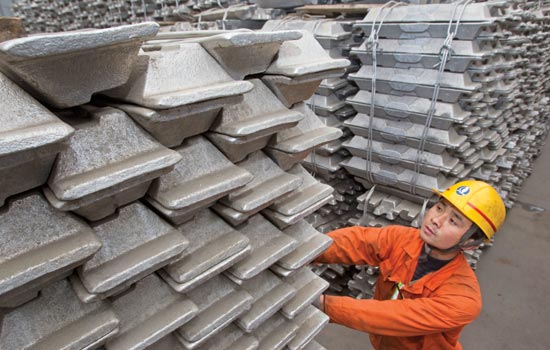Aluminum producers steeled for losses
Updated: 2012-06-18 09:20
By Du Juan (China Daily)
|
|||||||||||
According to CRU consultancy, an international independent commodities research institute, China's electrolytic aluminum supply reached 1.6 million tons in February with a growth rate of 20 percent year-on-year, but demand was for only 1.3 million tons with just a 4 percent increase compared with the same period last year.
"If there is oversupply every month it will eventually put much pressure on aluminum prices," said Tang Lianghua, an industrial analyst.
According to the Shanghai Futures Exchange, the electrolytic aluminum inventories in the exchange reached 367,689 tons in mid-April, which was a record high since May 2011.
The contradiction between the growing production capacity and reducing rate of demand will result in the bankruptcy of many aluminum producers, said a senior analyst working at the China Nonferrous Metals Industry Association who didn't want to be named.
What's worse is that it seems the go-west campaign will not bring much benefit to the industry in the long run.
"The main reason for companies going to the western provinces is low electricity prices," the analyst said. "It is true that there is a water shortage problem in the western area and transportation will raise costs for the companies, but with the cheap electricity and labor, the electrolytic producers can still make money."
According to data from the association, except in Qinghai and Xinjiang, companies have to pay 0.45 yuan for one kilowatt-hour of electricity, which brings the cost of electrolytic aluminum to 16,400 yuan a ton - higher than the selling price.
In Henan, Sichuan, Yunnan and Guizhou provinces and Guangxi Zhuang autonomous region, the unit power price is more than 0.6 yuan, which raises the price of aluminum up to 18,400 yuan a ton, creating deficits for many companies. However, there are few companies that plan to curtail output.
The analyst said a lot of companies will face bankruptcy if the situation prevails.
"In fact, private companies with strong financial power don't even need subsidies from the government. They have enough capital to invest in new projects," he said. "The overcapacity problem has been in existence for a long time and the government wants to solve it, too. However, only free competition in the market can provide a solution."
McLane shares the same view about a free market solution. He thinks the go-west campaign for the aluminum industry is not sustainable.
"In Europe right now we have partially curtailed some assets. When you are faced with decreasing aluminum prices, you have to look at what assets you are running continuously and how long you can afford to do that," he said.
According to McLane, moving a capacity of 10 million tons of smelting to western China would cost $45 billion for smelting and power.
"In fact, if you look at the amount of investment going on in the west right now, moving out from the east, it would be an investment equal to $450,000 per person for the new employment created," he said. "Many more jobs can be created with that amount of money if it is invested properly."
In China, the energy cost is about 40 percent to 45 percent of the cost to produce primary aluminum, which is about twice as much as it is in other countries, according to public figures.
McLane said about 30 percent of Chinese smelting production was unprofitable in 2011 in the aluminum industry worldwide.
Related Stories
Farmland inundated after aluminum sludge leak 2012-05-29 12:33
Aluminum manufacturer wins land bid 2012-03-09 16:15
Aluminum stockpiles surge 30% as growth decelerates 2011-10-21 10:05
Outlook for aluminum production 2011-07-07 10:39
Govt may stop 70b yuan electrolytic aluminum projects 2011-04-11 17:08
Today's Top News
President Xi confident in recovery from quake
H7N9 update: 104 cases, 21 deaths
Telecom workers restore links
Coal mine blast kills 18 in Jilin
Intl scholarship puts China on the map
More bird flu patients discharged
Gold loses sheen, but still a safe bet
US 'turns blind eye to human rights'
Hot Topics
Lunar probe , China growth forecasts, Emission rules get tougher, China seen through 'colored lens', International board,
Editor's Picks

|

|

|

|

|

|






